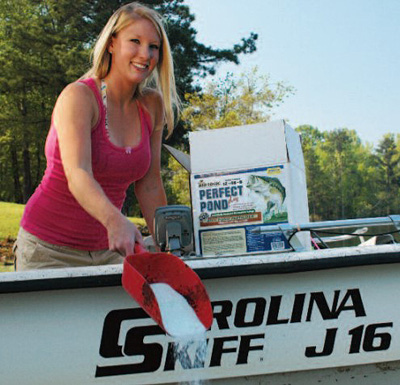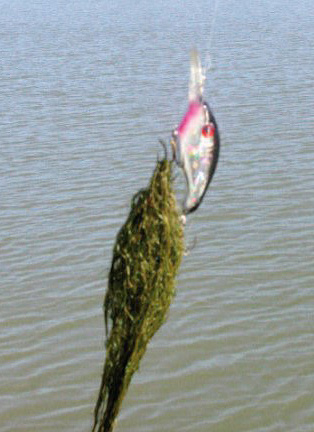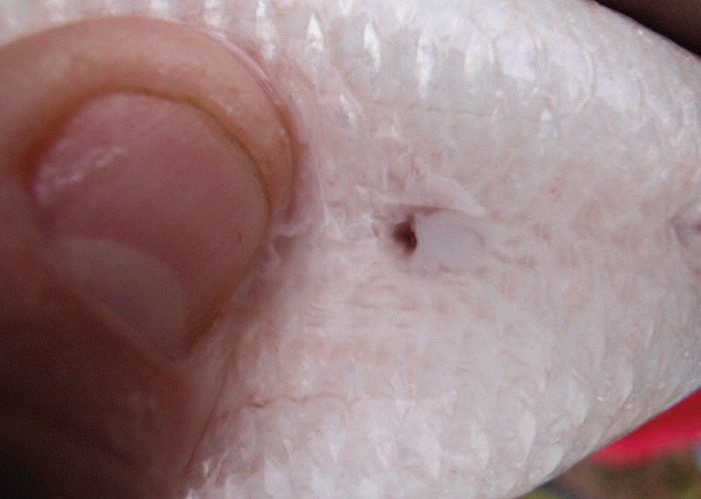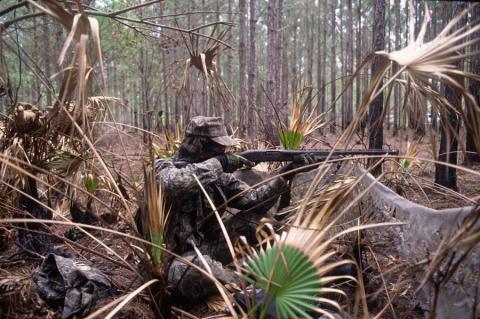Don C. Keller | Originally published in GameKeepers: Farming for Wildlife Magazine. To subscribe, click here.

be easily applied from a boat on larger lakes. Make sure
there are no aquatic weeds or algae before beginning a
fertilization program.
Once I turned 55, I started going to the doctor every year for a physical exam. I am now in my 70s and fortunately, can still climb a tree to bow hunt, canoe, hike and wade to fish.
When I go to my doctor, usually in the spring, he has certain criteria that he checks. He does this exam in a consistent manner and follows the same protocol each year. If there is something unusual that he has a question about we address the issue while the problem is small. So far so good.
To summarize the exam, we basically do the following:
He checks my temperature, my pulse, my heartbeat, my urine, my blood chemistry, and my reflexes. He then walks across the room, opens a drawer, starts stretching on a latex glove and reaches for the Vaseline. Then those dreaded words, "Bend over."
Lake owners should also have a standard protocol that they follow each year to maintain the health of their lakes. The first thing you should do is go to the lake in early spring (March in most areas) and check the water temperature. You want to do this so you have an idea as to when you should start fertilizing. Fertilization should begin when the water temperature approaches 60 degrees F. Please note; fertilization is usually not necessary in most northern lakes and ponds.
Next, pull a water sample and check the water chemistry: total alkalinity, total hardness, and ph. The total alkalinity is important because it will tell you if you need to add agricultural lime in order to make your fertilizer react. Total alkalinity should be 20 ppm or higher. If it is less, add 5-6 tons of agricultural limestone per acre.

often detect aquatic weeds that are in deeper
water. Treat with an approved herbicide before
beginning a fertilization program.
When you pull the water sample, look at the clarity of the water. If it is muddy, it may be cleared by adding 200- 300 pounds of cottonseed meal per acre along with some high phosphate fertilizer.
Usually the water will be clear since the cold winter temperatures will knock out plankton blooms. You need to look for submersed aquatic vegetation, especially filamentous algae or "pond moss." If this is present, take a sample and have it identified and get a recommended treatment. Most herbicides will not work until the water temperature reaches 60 degrees F. Do NOT fertilize until vegetation is gone. I would also suggest that you go one step further if the water is clear and no vegetation is seen around the edges. Get your tackle and tie on a jig, spinner bait or sinking lure and pull it slowly across the bottom. Often there will be vegetation off the shoreline that you can't see and this will need to be treated.
Many lake owners now have automatic feeders on their piers or on a grassy point. Take the panel off the feeder and make sure the battery is charged, check inside for dirt, wasp nests, old clumps of feed or any other obstructions. Put in some fresh feed and run a test cycle. Once the water gets to be 55-60 F, start feeding once a day in the afternoon when the temperature will be the warmest. As it gets warmer, you can feed 2 to 4 times a day.
Bass will start becoming aggressive when the water temperature begins to warm in the 50-55 F range. Take your tackle and catch several and examine them carefully. If you are catching a lot in the 10 to 16 inch range, then these should be removed. The bass you catch this time of year should be fat, if they are not you have too many. Don't worry about over harvest. Get some friends and ice chests and wear them out. Approximately 20-30 lbs of small bass per acre should be your harvest goal. If your bass are not crowded but are nice and fat, you can examine them to determine sex. The males will flow milt if a little pressure is applied to the abdomen. I suggest you remove all the males you catch. Females get larger.

Casting a deep-running crank bait or a jig can often detect aquatic weeds that are in deeper water. Treat with an approved herbicide before beginning a fertilization program.
Once you have addressed any issues that you have found when following the steps above, you are ready to start fertilizing. Use a quality pond fertilizer like Biologic's Perfect Pond Plus and you can triple your fish production. Physical completed. No Vaseline required.































